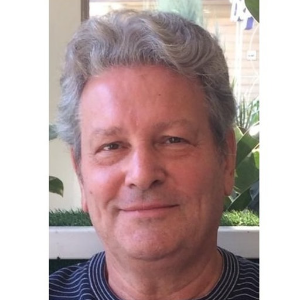Title : Vibrational spectroscopy techniques in analysing biogenic selenium nanostructures
Abstract:
[Oral/Invited Presentation]
Selenium is a vitally essential element, and the range between its dietary deficiency (under 0.04 mg per day) and toxicity (over 0.4 mg per day) is notably narrow. Diverse anthropogenic agricultural and technological activities are known to cause local selenium pollution of soils and aquifers, where selenium anions (selenite, SeIVO32–, and selenate, SeVIO42–) are its most soluble and hence toxic chemical species. Since late 1980s, it has been well documented that a wide range of microorganisms are capable of reducing selenite and (less frequently) selenate to selenium(0) nanoparticles (SeNPs) [1,2]. Besides potential bioremediation strategies for sites with excessive concentrations of selenium oxoanions, such processes are applicable as “green chemistry” routes for obtaining SeNPs [1–5]. Such biogenic SeNPs of microbial origin are always capped with biomacromolecular layers of variable compositions depending on the SeIV/SeVI-reducing microorganism and conditions [1]; these Se(0) nanomaterials can be widely used in various fields of (bio)technology [2–5]. Thus, their analysis using a range of instrumental techniques is topically significant. Among such techniques, vibrational spectroscopy is of special interest comprising modern Fourier transform infrared (FTIR) and Raman spectroscopies. In this talk, various examples will be presented which illustrate the usefulness and convenience of these highly informative techniques, including our own already reported [3–8] and ongoing studies. While FTIR spectroscopy is highly sensitive to macromolecular composition and structure of the capping bioorganic layers [5–7], Raman spectroscopy allows allotropic modifications and crystallinity states of Se(0) in SeNPs to be distinguished [4,6], including the detection of possible covalently bound sulfur atoms (revealed by S–Se vibration modes).
This research has been supported by the Russian Science Foundation (Grant no. 23-24-00582).
REFERENCES
[1] Tugarova A.V., Kamnev A.A. (2017) Talanta 174: 539–547.
[2] Ojeda J.J., Merroun M.L., Tugarova A.V., Lampis S., Kamnev A.A., Gardiner P.H.E. (2020) Crit. Rev. Biotechnol. 40: 1250–1264.
[3] Tugarova A.V., Vetchinkina E.P., Loshchinina E.A., Burov A.M., Nikitina V.E., Kamnev A.A. (2014) Microb. Ecol. 68: 495–503.
[4] Tugarova A.V., Mamchenkova P.V., Khanadeev V.A., Kamnev A.A. (2020) New Biotechnol. 58: 17–24.
[5] Wang Y., Ye Q., Sun Y., Jiang Y., Meng B., Du J., Chen J., Tugarova A.V., Kamnev A.A., Huang S. (2022) Front. Microbiol. 13: 845321.
[6] Tugarova A.V., Mamchenkova P.V., Dyatlova Yu.A., Kamnev A.A. (2018) Spectrochim. Acta Part A: Mol. Biomol. Spectrosc. 192: 458–463.
[7] Kamnev A.A., Dyatlova Yu.A., Kenzhegulov O.A., Vladimirova A.A., Mamchenkova P.V., Tugarova A.V. (2021) Molecules 26: 1146.
[8] Kamnev A.A., Tugarova A.V. (2023) J. Anal. Chem. 78: 1320–1332.
Audience Take Away
- The application of vibrational spectroscopy techniques is useful in analysing virtually all ‘green chemistry’ products, including both (bio)organic and inorganic substances.
- Various experts could learn how to apply the techniques to be discussed in this talk in their own research or practice.
- The knowledge on the capabilities of the discussed techniques could be widely used to expand the scope in both research and teaching.



